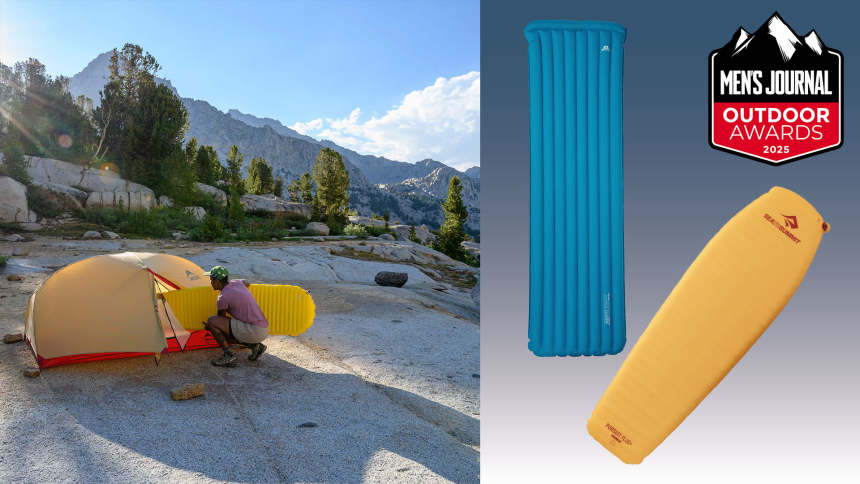Having skin that tends to get a bit shiny, especially around midday, can feel like a constant battle when you are trying to make your foundation look just right. It's almost as if no matter what you do, your makeup seems to slide around or settle into little lines, which is that frustrating experience many of us know all too well. You put in all that effort to create a lovely, even complexion, only to find it looking less than perfect a few hours later, and that can really dampen your spirits.
For people with an oily skin type, the way your foundation sits can be a real point of concern, you know? It’s not just about picking the right foundation itself; it’s also very much about how you put it on. A streaky application or a foundation that just doesn't seem to stay put can make you feel a little self-conscious, and nobody wants that. Finding something that helps your makeup look good all day, even with a bit of shine, feels like finding a true treasure.
This is where the tool you use to put on your foundation becomes incredibly important, actually. Just like picking the right kind of paint brush makes a difference for an artist, choosing the right foundation brush can completely change how your makeup looks and lasts. We are going to talk about which foundation brushes work best for skin that gets oily, helping you achieve a smooth, lasting look that feels great. So, let's figure out what makes a brush truly great for this purpose.
Table of Contents
- Understanding Oily Skin and Foundation Challenges
- Why the Right Brush Matters for Oily Skin
- Key Features of the Ideal Foundation Brush for Oily Skin
- Top Contenders: Types of Brushes That Work Well
- Application Techniques for Oily Skin
- Care and Maintenance of Your Foundation Brush
- Beyond the Brush: Other Tips for Oily Skin Foundation
- Frequently Asked Questions
Understanding Oily Skin and Foundation Challenges
Oily skin, quite simply, means your skin produces more natural oils, called sebum, than other skin types. This can lead to a shiny appearance, especially in the T-zone, and can also contribute to pores looking larger or even some breakouts. When it comes to putting on foundation, this extra oil creates a surface that's a bit harder for makeup to stick to, you know?
The main issues people face with foundation on oily skin are often that it separates, looks patchy, or just seems to disappear throughout the day. The oils can break down the foundation, making it look uneven or causing it to slide right off. It’s a bit like trying to paint on a slick surface; the paint just doesn't want to stay put, and that's a problem.
Why the Right Brush Matters for Oily Skin
Using the correct brush for your foundation can make a world of difference for skin that gets oily. A good brush helps you press the foundation into your skin rather than just spreading it around, which can make it last longer and look more natural. It's really about getting that product to bond with your skin in a way that resists the natural oils, so it holds up better.
When you pick a brush that's well-suited for oily skin, you can achieve a much more even and seamless finish. This means less likelihood of streaks or blotches, and a more uniform look across your face. Plus, it can help you use just the right amount of product, preventing that heavy, cakey feeling that sometimes happens when you try to cover up shine. So, in a way, it's about smart application.
Key Features of the Ideal Foundation Brush for Oily Skin
So, what makes a foundation brush "the best" for oily skin, then? It really comes down to a few important characteristics that help with application and longevity. These features work together to give you a smoother, more lasting finish, which is what we are after. It's about finding that perfect combination of elements.
Bristle Material: The Unsung Hero
For oily skin, synthetic bristles are, quite frankly, the top choice. Unlike natural hair bristles, synthetic ones don't absorb liquid foundation, which means more product goes onto your face and less gets wasted in the brush. This is very good for getting full coverage without having to use too much foundation, which can feel heavy on oily skin. They also tend to be easier to clean, which is a big plus for hygiene, especially when dealing with excess oil.
Synthetic bristles are also more durable and less likely to shed, which means your brush will last longer and perform consistently. They hold their shape better, allowing for more precise and controlled application. So, for this purpose, a plastic or similar material for the bristles is really the best choice.
Density and Shape: Making the Difference
A dense brush is usually preferred for oily skin because it helps to buff the foundation into the skin thoroughly. The more bristles packed together, the better they can blend the product, creating a smooth, almost airbrushed effect. This density helps to prevent the foundation from sitting on top of the skin, which can lead to it breaking down faster.
When it comes to shape, brushes with a flat top or a slightly rounded, dome shape tend to be very effective. These shapes allow for a circular buffing motion that really works the product into the skin, helping it to adhere better. A densely packed, flat-top brush, for instance, can give you a really polished finish that looks quite natural, you know?
Top Contenders: Types of Brushes That Work Well
There are a few types of foundation brushes that consistently get high marks for how well they perform on oily skin. Each one offers a slightly different application style, but they all aim for that lasting, smooth look. It's about finding which one feels right for you and your routine.
The Flat-Top Kabuki Brush
This brush is often considered a favorite for many with oily skin, and for good reason. It features a very dense, flat top of synthetic bristles. The design allows you to buff foundation into the skin with small, circular motions, which helps to really press the product in and create a smooth, even finish. It’s excellent for achieving a good amount of coverage that still looks natural, and it helps the foundation stick around longer, too.
The flat surface of this brush means you can cover larger areas quickly while still getting a very blended look. It's particularly good for liquid or cream foundations, making them appear almost like a second skin. So, if you're looking for something that offers both speed and a lovely finish, this is certainly one to consider.
The Stippling Brush
A stippling brush typically has two lengths of bristles: longer, less dense outer bristles and shorter, denser inner bristles. This design is perfect for applying foundation with a light, airy touch. Instead of buffing, you use a "stippling" motion, which means gently tapping the brush onto your skin. This technique creates a very sheer, natural-looking finish, almost like an airbrush effect, which can be great for oily skin that doesn't want too much product.
This brush is ideal for those who prefer a lighter coverage or want to build up their foundation gradually without it looking heavy. It helps to distribute the product evenly without pushing too much into the skin's texture, which can sometimes happen with very dense brushes. It’s a pretty unique way to put on foundation, and it works well.
The Dense Buffing Brush
Similar to the flat-top kabuki, a dense buffing brush is also packed with synthetic bristles, but it might have a slightly rounded or domed top. This shape is still fantastic for buffing foundation into the skin, helping to blur imperfections and create a seamless look. The high density ensures that the product is really worked into the skin, which is key for lasting power on an oily complexion, as a matter of fact.
These brushes are versatile and can be used with a variety of foundation formulas, from liquids to creams. They provide excellent control and allow you to build up coverage where you need it most, all while maintaining a natural appearance. It’s a very reliable choice for anyone wanting a polished, long-wearing finish.
Application Techniques for Oily Skin
Having the best brush is only part of the story; how you use it also makes a big difference, you know? For oily skin, certain application methods can really help your foundation stay put and look its best throughout the day. It's about being strategic with your movements.
Dot and Buff: Instead of applying foundation directly to the brush, dot small amounts of foundation onto different areas of your face first. Then, use your chosen brush to buff it in using small, circular motions. This helps to distribute the product evenly and prevents you from applying too much in one spot, which can lead to a cakey look later on.
Light Layers: Build up your coverage in thin layers. Start with a small amount of foundation and apply it thinly. If you need more coverage in certain areas, add another very thin layer. This approach is much better for oily skin than trying to apply one thick layer, as it's less likely to separate or crease.
Press and Roll: For areas that tend to get very oily, like the T-zone, try a pressing or stippling motion with your brush instead of just buffing. This helps to push the foundation into the skin, creating a stronger bond and improving longevity. It's a bit like patting it in firmly.
Less Is More: With oily skin, using too much foundation can often make the problem worse. A good brush helps you use less product while still achieving great coverage. Remember, the goal is to even out your skin tone, not to completely mask it. So, just a little goes a long way.
Care and Maintenance of Your Foundation Brush
Keeping your foundation brush clean is absolutely vital, especially if you have oily skin. Oil, dead skin cells, and old makeup can build up in the bristles, creating a breeding ground for bacteria. This can lead to breakouts and also make your foundation application look less smooth, which is not what you want. Regular cleaning extends the life of your brush and keeps your skin happy, too.
Aim to wash your foundation brush at least once a week, or even more often if you use it daily. You can use a gentle brush cleanser or even mild soap and water. Work the soap into the bristles, rinse thoroughly until the water runs clear, and then reshape the bristles. Lay the brush flat or hang it upside down to dry completely. This prevents water from seeping into the ferrule (the metal part) and loosening the glue. Taking good care of your tools is a simple way to ensure they always perform their best.
Beyond the Brush: Other Tips for Oily Skin Foundation
While the right brush is a very important piece of the puzzle, there are other things you can do to help your foundation last on oily skin. It's a bit of a team effort, really, between your tools and your products. Thinking about these extra steps can make a real difference in your overall look, so consider them.
Primer Choice: Using a mattifying or oil-controlling primer before your foundation can create a better base for your makeup. It helps to absorb excess oil and create a smoother surface for the foundation to adhere to. This step can really extend the wear of your makeup, you know?
Foundation Formula: Opt for foundations specifically designed for oily skin. Look for words like "matte," "oil-free," "long-wearing," or "non-comedogenic." These formulas are less likely to break down from oil and are often formulated to provide a more lasting finish. You can Learn more about foundation types on our site.
Setting Powder: A light dusting of translucent setting powder after your foundation can help to lock everything in place and control shine. Focus on your T-zone or any areas that tend to get particularly oily. Just remember not to overdo it, as too much powder can look heavy. For more makeup tips, you might like to look at this page.
Blotting Papers: Keep blotting papers handy for touch-ups throughout the day. Instead of adding more powder, which can build up, blotting papers absorb excess oil without disturbing your foundation. This is a quick and easy way to refresh your look and reduce shine.
Hydration: Believe it or not, sometimes oily skin can be a sign of dehydration, causing your skin to overproduce oil to compensate. Make sure you're using a lightweight, oil-free moisturizer, and drinking enough water. A well-hydrated skin barrier can actually help regulate oil production, which is something to consider.
Frequently Asked Questions
What type of foundation brush is best for oily skin?
Generally, a dense, synthetic brush with a flat top or a slightly domed shape is considered the best choice for oily skin. These brushes help to buff and press the foundation into the skin, which makes it last longer and look smoother. They also don't absorb too much product, which is good.
How often should I clean my foundation brush if I have oily skin?
It's a good idea to clean your foundation brush at least once a week, especially with oily skin. Regular cleaning helps remove oil, old makeup, and bacteria, which can prevent breakouts and ensure a smooth application every time. So, pretty often, really.
Can I use a beauty sponge instead of a brush for oily skin?
Yes, you absolutely can use a beauty sponge for oily skin. Sponges can provide a very natural, skin-like finish and can also help to absorb some excess oil during application. Some people find that a damp sponge works really well to press foundation into the skin for a lasting effect. It's a matter of personal preference, you know?
Finding the best foundation brush for oily skin truly can transform your makeup routine. It’s not just about applying makeup; it’s about creating a smooth, lasting base that makes you feel confident all day. By choosing a brush with the right features and using effective application methods, you can tackle that shine and enjoy a beautiful, even complexion. So, give these ideas a try and see what works best for your unique skin.
For more information on makeup tools and techniques, you might find this resource helpful: Allure's Guide to Makeup Brushes.



